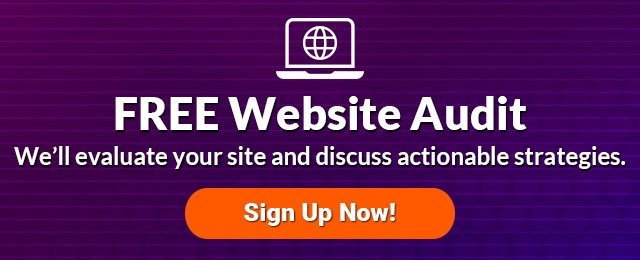
Even established online businesses can make the mistake of overlooking important marketing metrics in favor of so-called “vanity metrics.”
Overall website traffic, number of page views, time spent on site, and email open rates are all examples of data points that make marketers feel good about their efforts but don’t carry the weight of a more granular metric.
In this article, we’ll discuss eight marketing metrics that many business owners may not pay sufficient attention to. We’ll also take a look at reliable, actionable approaches to improving them.
Cost per Acquisition
As the name itself suggests, cost per acquisition measures the total costs required to acquire a single customer for your business. If acquiring a customer costs you more than their lifetime value, you are just not running a profitable business.
One of the best ways to improve your cost per acquisition is to get smarter when retargeting your customers, especially those who have never gone through with a purchase.
For starters, whenever someone abandons their cart, send them an email to see what went wrong.
Cult Beauty has one of the best abandoned-cart emails in ecommerce. It focuses on lending their customers a hand rather than merely nudging them to convert. The information you unearth can help you improve your services (and your stock), reducing the likelihood of further cart abandonment.
 Source: Gmail
Source: Gmail
Since you now already have the contact details of the leads who have failed to convert, you can retarget them with both your search ads and your social media ads. Ideally, you will serve them product recommendations that match their interests (which you’ve gathered based on the items they failed to purchase).
Simply by smarter retargeting – i.e., relying on customer-specific data for each individual – you can ensure these customers do end up coming back, without having to up your acquisition budget.
Cost per Lead
Cost per lead is the amount you have spent to acquire a lead. There are dozens of strategies you can employ to generate leads. You might choose to create gated content, host events, or offer freebies and discounts, to name a few.
As lead magnets are the most commonly used tactic, let’s explore how you can make yours work better.
For starters, you want to offer your leads something tangible, valuable, and useful, not just the same old ebook that you’ve put together in a hurry. You need something fresh, something relevant, and something that will prevent a lead from unsubscribing as soon as they’ve got their hands on what they wanted.
For instance, Search Engine Journal offers some truly amazing ebooks. They are gated, but they are also certainly a resource you would be willing to give your email address up for. Plus, you are practically guaranteed more valuable resources after you have signed up for the newsletter.
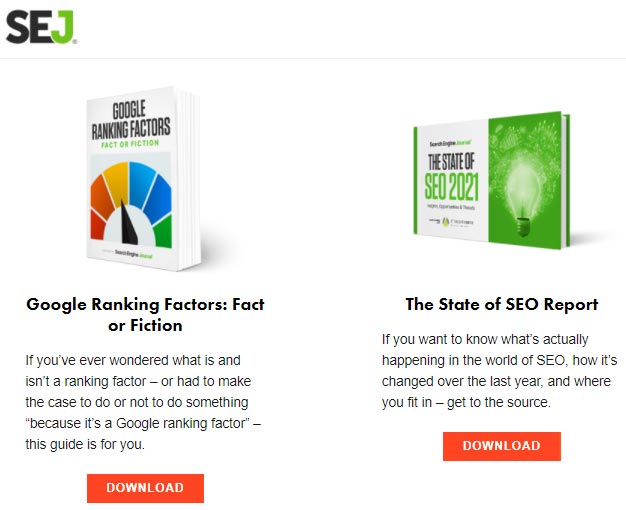
Source: Searchenginejournal.com
The goal of lead generation isn’t just generating leads. It’s finding leads you will later be able to convert. By creating rudimentary content that isn’t worth the personal information you are asking in return, you will merely be spending time and effort on a tactic that doesn’t really work.
Instead, invest a bit more into a resource that truly converts and that has the potential of converting for a long time to come.
Customer Lifetime Value
Customer lifetime value is the revenue you generate from an average customer over their entire time doing business with your company. To improve this metric, you want to generate loyalty and ensure the majority of your customers are repeat customers.
You are essentially looking to build a brand-and-customer relationship rather than merely sell a product or a service.
One way to inspire customer trust and build loyalty is to feature them on your website. You can hop on to social media for the task. Use the images, reviews, and mentions your customers are already posting there.
Gili Sports has done a marvelous job of this. Their product pages combine social proof in the form of user reviews and highly personalized user-generated content that makes each individual customer feel more valued. Plus, it gives future customers the chance to see the product in action, making a new conversion that much more likely.
 Source: Gilisports.com
Source: Gilisports.com
Getting mentioned by a brand is always a bit of a thrill, and it is this positive emotion you should leverage to increase CLV. Relly on user-generated content across all your channels (socials, website, even offline marketing) to grow a family of users who are ready to make another purchase.
Bounce Rate
Bounce rate is the percentage of visitors who leave your website after viewing just one page, rather than spending more time on it or visiting additional pages. It also happens to be a ranking factor, as it signals the search engine that visitors haven’t found what they were looking for on your page.
A great way to reduce bounce rate is to keep your users engaged. You want them to enjoy their time with you and spend more time browsing and absorbing information.
How you do this will depend on the nature of your page. You can, for instance, use video. Mixam employs this tactic very well, for example. They have two videos on their homepage, each a little over a minute long. They detail what their service is all about, what the process involves, and what you can expect from doing business with them.
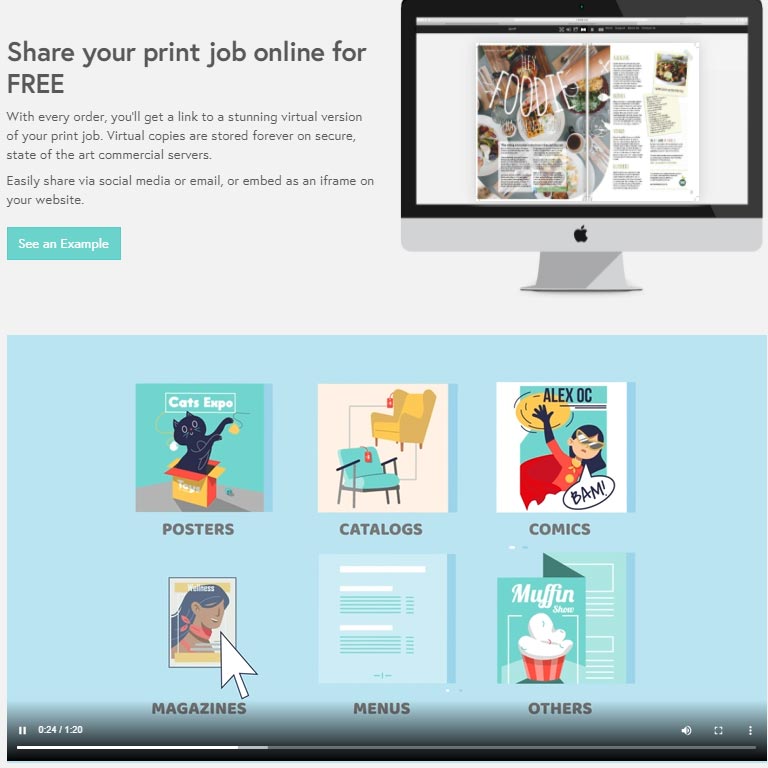 Source: Mixam.com
Source: Mixam.com
A visitor who spends even a minute on your main page, watching an interesting video, will send just the right signal to Google.
Make sure the video is worth the watch, though. Augment it with plenty of quality and engaging copywriting that details all the required information for those who cannot play it for whatever reason.
Lead-to-Customer Conversion Rate
Lead-to-customer conversion rate refers to the percentage of leads you are able to convert into paying customers. You want this figure as high as possible, as it is the only way to keep your business sustainable. Plenty of leads but few customers translates to literally a waste of effort.
To convert more leads, you need to market to them more effectively. Naturally, email is the way to go. You can reduce the amount of time it takes to send your message out simply by selecting the right email marketing tool.
Lead nurturing is a bit of an art in itself, so make sure you don’t push too hard.
Focus on segmenting your audience well. Not everyone will want to see the same information, so the more personal you can get, the better. Consider metrics like age, interests, sign-up channel, job title, etc.
For instance, if someone has signed up for your newsletter from your homepage, you may not be able to tell what kind of emails they would like to receive. A more general approach may be warranted. However, when you know a lead has signed up through a specific lead magnet, you can deliver more similar content into their inbox, subtly pushing for a conversion.
Lead nurturing is a bit of an art in itself, so make sure you don’t push too hard. Allow your leads to convert when they are ready, rather than risk alienating them.
Social Media Engagement
The levels of engagement from your social media following are a great indicator of how good you are at creating communities that are not only large but also loyal. Large followings that result in no conversions (and no engagement) are usually rather hollow.
Social media marketing is a science of its own, and there are hundreds of ways to boost follower engagement.
For example, Transparent Labs does a great job of balancing different kinds of posts on their Instagram. They share product shots, photos from their followers, important and inspirational messages from athletes. They provide tips and motivational advice, and most importantly, they reply to questions and comments.
 Source: Instagram
Source: Instagram
An active and communicative social media presence is always the way to go. You want to dedicate the time to being human on social media. Get back to your followers, comment on their images, show them you care, and support them in their goals. They will remember it and pay you back in kind.
Average Order Value
Average order value is the average amount spent by a customer per order. Ideally, you want each order to contain more than one item. After all, you can never expect your most valuable items to be the ones that fly off the shelf the most often.
There are several ways to boost this metric. First, you can recommend similar or complementary products on all of your product pages. A “people have also purchased” widget can tackle that very effectively. Just make sure it’s set up so that the recommendations make sense. This will inspire additional purchases and perhaps even direct attention to other products the shopper has not yet seen.
Zara does a great job of this. The fashion retailer always shows a “match with” and a “you may also like” widget. That way, they’re not only giving customers direct links to the entire outfit worn by the model but also showcasing similar items in the same cut or color that will likely spark an additional purchase.
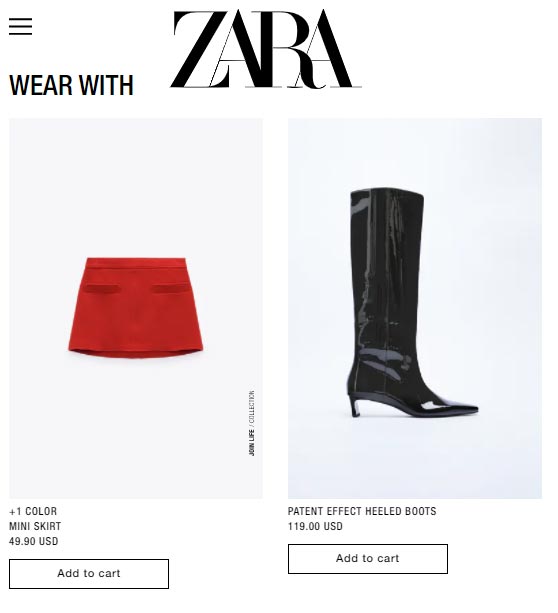 Source: Zara.com
Source: Zara.com
Also, offer product bundles when and where it makes sense. Bundles come with a discount, and customers will often choose them over a single product. They enjoy the added value, even when they weren’t necessarily in the market for all of the products.
Somnifix does bundles well, and their 4-week, 12-week, and 12-month bundles provide plenty of incentive for a larger purchase. Similar packages containing multiples of the same product (especially if it’s often used) are a great boost to average order value.
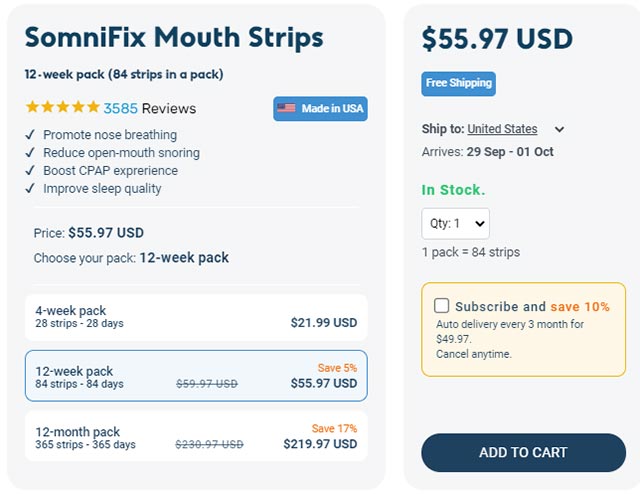
Source: Somnifix
Website Conversion Rate
Finally, you also want to make sure your website conversion rate is also high. You can achieve this goal by improving website speed, writing better copy, adding social proof, or using any of dozens of other tactics.
Adding an exit-intent pop-up to your website can be a great conversion booster, too. It will remind visitors of your current offer, highlight your main selling points once again, and simply give them one more opportunity to convert.
Refrain from using full-screen pop-ups
Bay Alarm Medical has a great pop-up. It’s not served to visitors who have only viewed one page (reducing the risk of getting on their nerves), and it is simple yet highly effective. It offers two conversion avenues and only lists key information (including the price).
Refrain from using full-screen pop-ups, and especially refrain from using them after a single pageview. Throw your best copywriting at them and provide additional incentives. In our example, the incentive is FOMO, as the offer is only effective for a limited time.
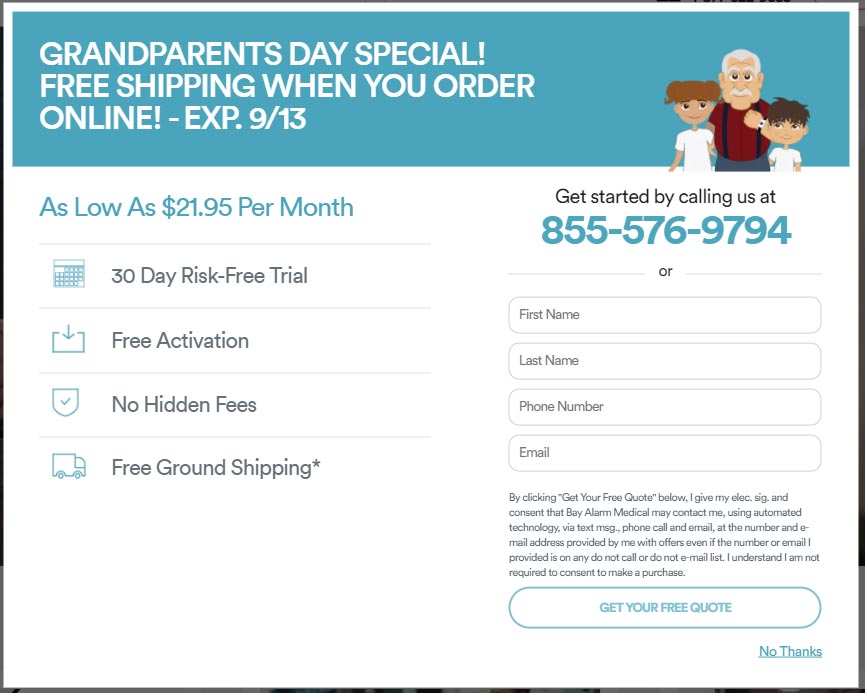 Source: Bayalarmmedical.com
Source: Bayalarmmedical.com
Final Thoughts
Marketing metrics are exceptionally valuable indicators of a company’s strategic and operational performance. They allow businesses to benchmark themselves against competitors and other businesses who operate in the same industry.
However, if this is the only way you’re using the data that’s being generated about your business, you’re missing a trick.
The real value of marketing metrics is in helping businesses accurately identify specific aspects where they can become more efficient and effective.
They also help decision-makers within the organization prioritize focus and energy. If certain key metrics are significantly below an industry standard, it’s a no-brainer where to seek improvement.
Always look to mine as much value as possible from the reporting layer that you build over your business’ marketing data.
The reason this information exists is to help you take meaningful action and make your business more competitive.
Related articles you may be interested in:
Why Do Niche Ecommerce Sites Maximize Your Chances For Success?
Tips for Spreading Awareness of Your Online Business
Ecommerce Website Planning And Building - The Basics You Need To Know [WITH VIDEO]

